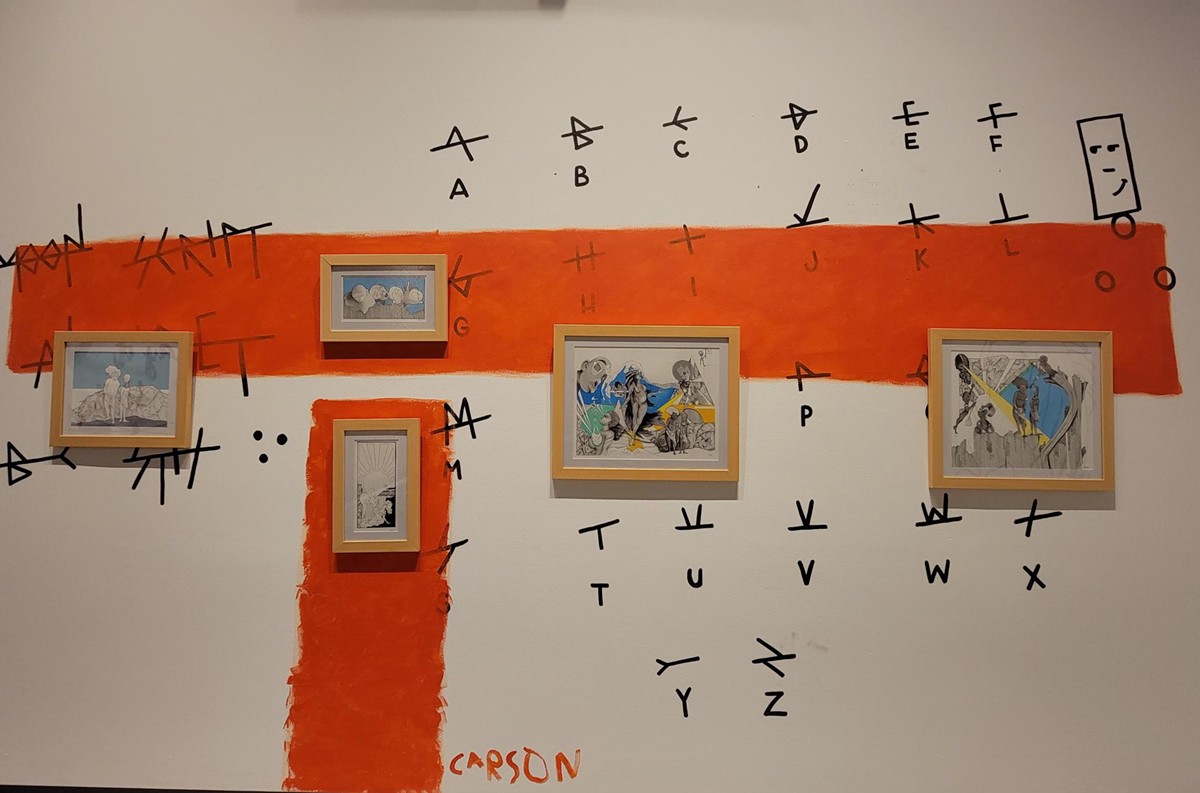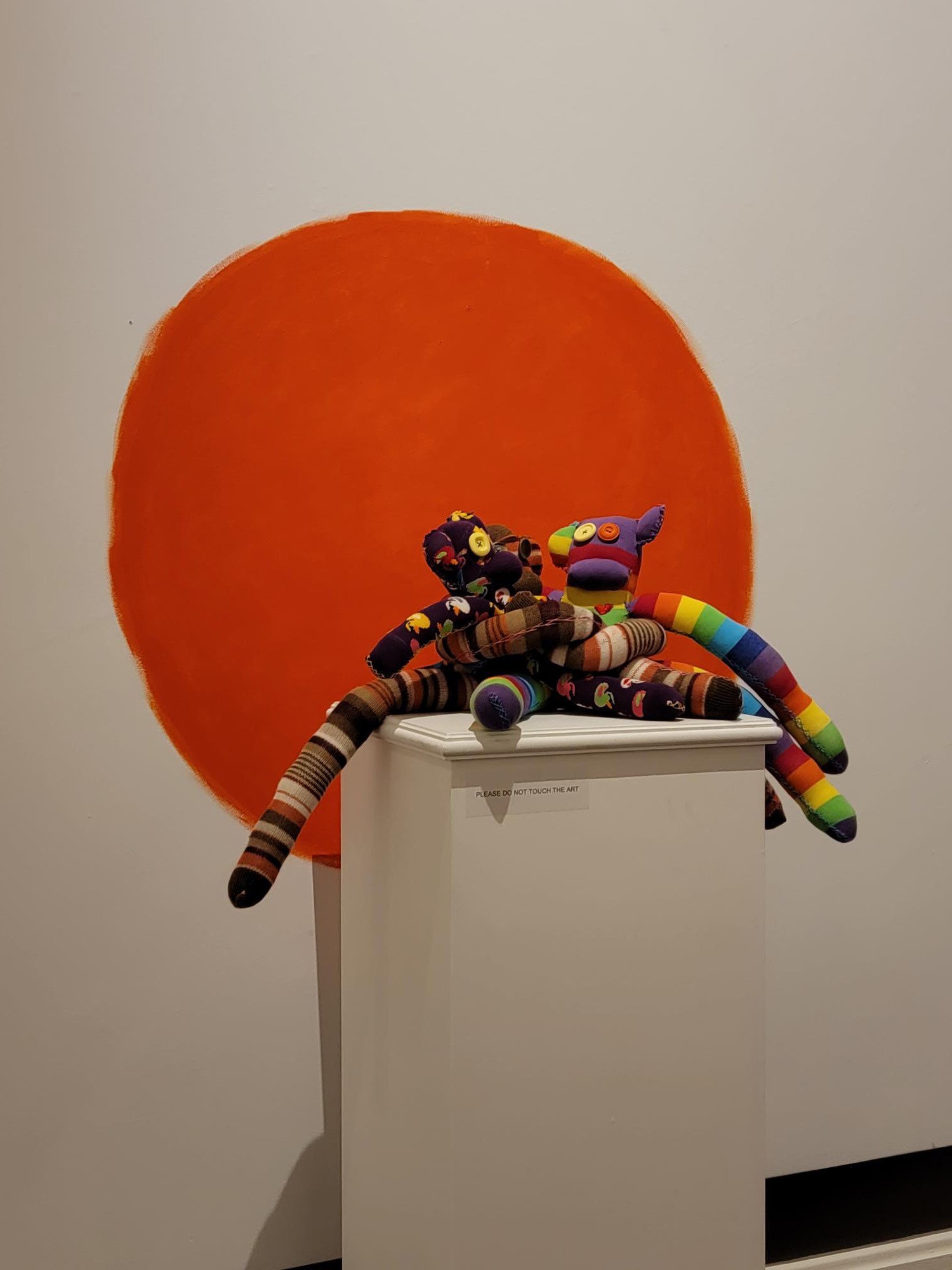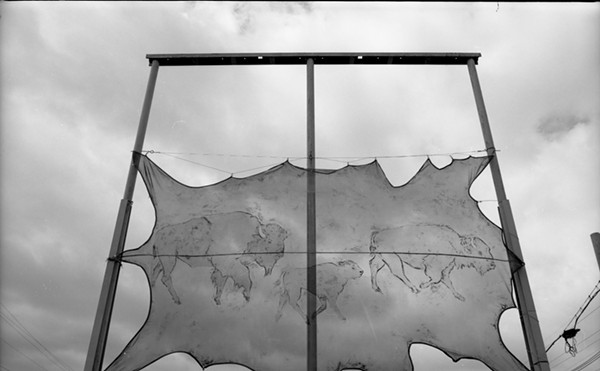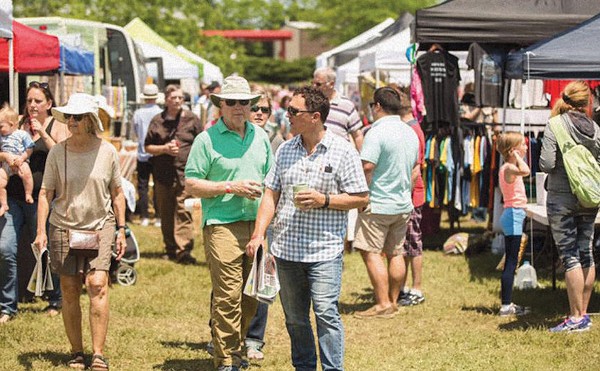When I started planning these “Studio Visit” pieces, I certainly had plans to be able to actually visit artists. Since the pandemic seems to continue making other plans, getting these done on a regular basis has been much tougher. I’ve had help from other writers willing to Zoom or do phone calls with local artists but I really love the face-to-face experience and getting to see art close enough to touch. Finally… finally! I had the opportunity to sit down with local artist Alexis “STIX” Brown at her Interlocutor residency at the Carnegie Center for Art and History in New Albany. Brown is the Center’s first artist in residency, and, through the end of July, the Sally Newkirk Gallery has been transformed into her temporary working studio. The chance to do a real studio visit only minutes from my house was wonderful and, as an artist myself, the chance to dip into the work and mind of another artist was an experience I’ve been missing.
“The residency came about because the pandemic had changed the course of what they wanted to do here,” said Brown. “This was supposed to be a show, but when the pandemic hit and people weren’t allowed to come out, they decided that maybe that wasn’t the best investment since it would have a low amount of people coming in. They wanted something interactive.”
Artist Jen Fuller helped Brown make the introduction to the Carnegie through a Zoom class they taught together during the pandemic shut down. Carnegie’s museum educator Julie Leidner was impressed with Brown’s interactions with the New Albany community. Brown currently resides in Clarksville, after moving back to the area after living in Florida for a few years.
Leidner asked that Brown write a proposal for a three month residency. When granted the residency, it was important to Brown to make the space feel cozy and most of all, safe. Part of that included bringing her cot for rest periods.
“You can’t stay the night,” said Brown. “It was just very important for me to feel safe. I was going through some personal things, and for a long time, I’ve been trying to understand healthy boundaries. I’ve just been on this journey of trying to feel safe in here. Julie Leidner, she’s like the shepherdess of this project...she helped me think of the title of the show. Then to walk into here. She basically was like, ‘Here’s the ground and there’s no ceiling.’”
“And, I just flourished because they employ a lot of artists. They are a branch of the Floyd County library, which is rooted in education. They’ve cultivated a type of environment that I’ve never gotten to experience. With everything that was going on with the pandemic and human rights, equal rights, um, it was very frightening to come in here.”
As an African American artist, it can be difficult to imagine yourself in spaces that have been often reserved for white artists. Moreso, it is difficult to imagine yourself being allowed to create free from the expectations that the only creative conversations you can have must be about race.
“It’s so funny that we have this title ‘Interlocutor’ where I’m literally holding discussions,” said Brown. “We’re not going to address your anger here. We’re going to find a common ground to talk about art. And if you feel that the conversation is going in a direction that makes you uncomfortable, you can walk away, and that’s a safe place. I don’t think we have enough of that.
“We have this awesome opportunity to share news about each other, and to show that we’re on the same frequency, but we haven’t been able to share a safe space together so that we can recognize your ego and be respectful to your character because I haven’t got to meet you in real life.”
For Brown, it is important that all feel safe in her residency space to enjoy the works and to share ideas or concerns freely. She is a connector and building walls to separate isn’t in her plans.
“Whatever energy you bring to me, I’m going to meet it with something uplifting,” said Brown.
Brown, who was formally educated in art at Bellarmine, finds that giving people space and room to participate helps to foster not only relationships but transformations.
“There’s been a lot of kids that come in here,” said Brown. “And this kid came in while I was painting, and he ended up painting the whole thing for me [gestures towards a wall of the gallery]. I was like, ‘Bro, you don’t have to.’
The kid signed his name, Carson, under his handiwork which consists of a wide horizontal orange stripe on the wall and a shorter vertical one. Because of that experience, he brought his other siblings to see his painting. Experiences like this seem routine for Brown during the show. There is a tinker space that allows visitors to continue the conversations started by the works that Brown has installed. Through their drawings and notes, Brown is able to get valuable feedback that helps her as her time evolves in the Carnegie space.
One of the attractions for me when I went to the show was to see the “Anxiety Wall.” It’s a large wall that is covered in curved lines from floor to ceiling. It was first painted in black but is being refinished in orange with some black peeking through. Brown explained it was a way for her to enter her journey into the Carnegie space and find comfort as a person with anxiety.
“So, um, when I first got in here and I was dealing with a ton of anxiety — trying to get settled in,” said Brown. “That’s where you’re seeing the jet black in the corner. To cover all that, I do a thin layer of white paint which is to signify control of my emotions.”
Brown has transformed herself along with the space at the Carnegie into a space that has room for everyone and shifts with the artist’s needs as well. Our time and conversation spanned so much more than I have space in these pages to cover, but it is important to know that this is indicative of the kind of artist that Brown is. True human exchanges, as we had during the almost two hours I spent at the Carnegie with her, are central to the experience of Brown’s work. Brown aims to show herself and Black people in a different light, but also she uses her work to pay reverence to those who have helped her path during this three-month journey. Be sure to stop in on Saturday, July 10 for the closing reception. See the sock monkeys and ask Brown to tell you about them. It’s a beautiful dedication to a creative experience that Brown is certain will be a permanent part of her artistic work moving forward. Interlocutor officially closes on July 30. •









